Polypropylene pipes can be screed or not. Do-it-yourself floor heating from polypropylene pipes
The heat-insulated floor from polypropylene pipes is popular because of its many positive properties. For the device with do-it-yourself floor heating it is more efficient to use these elements. Steel pipes are a relic.
Benefits
If you make floor heating with PVC pipes, you can achieve many advantages. These include:
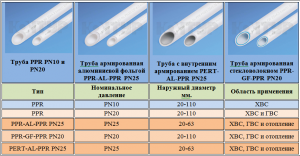
disadvantages
When using polypropylene pipes for floor heating devices, it is necessary to use elements with reinforced walls. The use of conventional materials will reduce the life of the system. Unreinforced walls can not cope with the high load from the circulating coolant under pressure. Also, a certain effect is observed from the screed and other elements of the warm floor.
How to mount polypropylene pipes
Another disadvantage of polypropylene is its instability to high temperatures. Therefore, it is forbidden to use in rooms with high fire hazard. The normal working temperature of polypropylene is + 75 ° С (pressure up to 7.5 atm.). It can be operated at + 95 ° C, but in this case the service life is significantly reduced. Therefore, when installing a floor heating system, care must be taken to ensure that the coolant reaches the optimum temperature.
Varieties of polypropylene pipelines
Polypropylene pipes are popular for the installation of underfloor heating, water supply systems and other engineering networks in the house. They can be single-layer or multi-layer. Each option has its own scope.
Polypropylene pipes for water and heating systems
Single layer
The main varieties:
- PPH. Pipelines are made of homopolypropylene. They are not used for underfloor heating devices, but are widely used for water supply and ventilation systems;
- RRV. Made from polypropylene block copolymer. They are characterized by high strength and durability;
- PPR For production, a random copolymer of polypropylene is used. Pipes from this material are able to effectively distribute the produced load across their walls;
- PPs Pipes of this type are flame resistant. They are able to work effectively at a temperature that does not exceed + 95 ° C.
Layered
There are several types of multilayer pipes, which are reinforced with a reinforcing layer of the following materials:
- aluminum. A thin reinforcing sheet is applied to the outer surface of the pipeline. When connecting several elements, the aluminum layer is cut by 1 mm. There are also variations where the reinforcement is carried out inside - between the walls. Polypropylene pipes with aluminum reinforcement are able to work efficiently at a temperature of + 95 ° C (for a short time at + 110 ° C);
- fiberglass. The reinforcing layer is placed between the sheets of polypropylene. These pipelines are effective for underfloor heating;
- composite. A mixture of aluminum fibers and fiberglass is placed between two layers of polypropylene.
Preparatory work for laying a warm water floor
It is impossible to make a warm floor using polypropylene pipes with your own hands, if you do not properly prepare the base for their installation:

Calculation of the required length of the pipeline
Do-it-yourself piping laying in the screed should be reproduced according to a certain pattern. The heat-insulated floor from polypropylene pipes can take the form of:

For the installation of a heated floor with your own hands, the step between the turns should be from 10 to 30 cm. In most cases, 30 cm is enough. In areas with significant heat loss, you can reduce the step to 15 cm. High efficiency of underfloor heating is maintained if you make a water circuit in cement-sand screed with a maximum length of 80 m (ideal - up to 50 m).

You can use graph paper to calculate the required number of pipelines. On it, on a scale, they draw a plan of the room, where a diagram of a warm floor is depicted. By measuring the length of the circuit, you can navigate about the required number of pipes. It is also easy to find out if using a regular thread. It is laid on the floor according to the scheme that is selected for the device of the warm floor.
After all the manipulations, it is enough to measure the length of the thread, which will correspond to the meter of pipelines. When using any option, you need to increase the required volume by 10%.
Pipe laying
For laying polypropylene pipes in the screed, it is recommended to use the “spiral” scheme. In this way, a more uniform surface heating can be ensured and installation easier. The pipes will be laid with a large radius, which is not the case when using the "snake" scheme.
To attach the water circuit to the prepared base, a metal mesh is laid. It will also strengthen the screed layer, which will last a longer period. Pipes are attached to the grid using metal wire or plastic clamps.
These elements should be installed every 0.8 m. The fasteners should not be tightened too much so as not to cause pipe deformation. They can also be fixed directly to thermal insulation using dowels.
Final stage
After installing the water circuit, you need to connect it to the collector group. One end connects to the feed, the other to the return. After connecting to the collector, it is necessary to test the heating system. This can be done if you start the coolant in a warm floor. The system pressure should be higher than the working one, but not more than 6 bar.
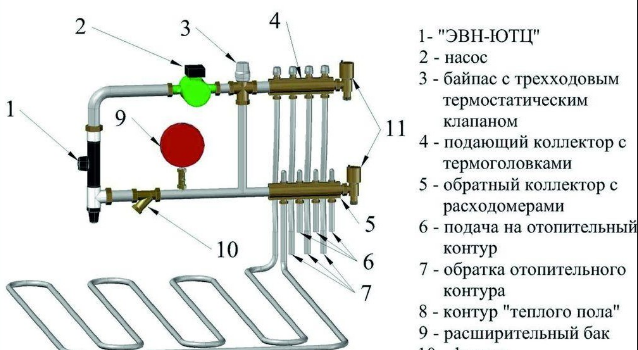
Every half hour you need to raise its level to the previous level. Such actions are repeated three times, after which they leave the floor heating alone for 24 hours. If during this time the pressure has dropped no more than 2 Bar, then the installation was successful. At the last stage, they go to the screed. When it dries, you can begin laying flooring.
Video: Soldering polypropylene pipes
The secrets of treating joint pain from our regular reader.
Hello!
My name is Genadiy Alekseevich. I am a stove-maker with an experience of over 20 years. I am engaged in both repair and construction of Russian stoves and fireplaces. I always carry out the work very efficiently and carefully, which negatively affects the condition of the joints. With age, the pain began to get stronger, up to a state where I could no longer work. Having tried a lot of both medical and folk methods of treatment, I realized how serious my disease is, since there was no positive effect. Until I came across one remedy, which I want to tell you about.
This is a unique mixture of the rarest and most powerful natural healing substances. This tool has proved its effectiveness not only to patients, but also to science, which recognized it as an effective drug. Joint and back pain goes away in 10-15 days, studies have shown. The main thing is to strictly follow the instructions in the methodology. You can order the product in its original packaging, with a guarantee of quality, at
There is a need for additional floor heating in all regions of our country: the first floors of residential buildings are cooled most of the year. The solution to the problem is the installation of a separate heating system for screed. Most often, polypropylene pipes are used as a conductor.
Pipes: marking and the right choice
Marking of polypropylene pipes is the first thing that you pay attention to when choosing a suitable conductor for hot water, since not every product is suitable for these purposes. What is hidden under ciphers:
- The working pressure PN that the pipe must withstand throughout its life at a water temperature of 20 ° C. For a warm floor, you should choose a designation no lower than PN20-25 - they are designed for hot water.
- Variety of material: PP - polypropylene. Its addition PP-1, PP-2, PPB indicates the type of raw materials used - homopolymer or block copolymer. For hot water, pipes marked PPR, sometimes PPB, are suitable.
- The diameter of the conductors and their wall thickness in millimeters is from 10 to 1200 mm. For internal heating systems and the organization of a warm floor, pipes with an internal diameter of not more than 30 mm are used.
- Marking - manufacturer's designation, year of manufacture.
Manufacturers
There is great competition in the market for pipe manufacturers. Which to choose?
- Russian brands: Politek, PRO AQUA, Heisskraft, RVC, Santrade;
- Germany: Akwatherm, Banninger, Rehau, Wefatherm;
- Czech Republic: FV-Plast, Ecoplastik;
- Turkey: Pilsa, Kalde, TEBO, Firat, Vesbo and Jakko;
- China: Dizayn and Blue Ocean.
The characteristics of all products are indicated in the marking and must comply with international standards. Which brand to choose - can not be said unequivocally. It’s up to personal preference.
Pros and cons of underfloor heating from polypropylene pipes
Is it worth choosing products for organizing floor heating and can propylene pipes be filled with concrete under the screed?
Let's start with the advantages of using material:
- Resistance to changes in temperature and pressure;
- Low thermal conductivity minimizes the loss of thermal energy;
- Low cost of pipes and their installation, maintenance;
- There are no deposits on the inner walls.
- The low flexibility of the pipes of at least 8 diameters makes contouring difficult ”;
- The temperature in the room during installation is limited - not lower than + 15 ° C;
- High coefficient of linear expansion - conductors can change their dimensions when exposed to hot water. It is possible to lay polypropylene pipes in the floor screed, but they must be correctly calculated and selected so that there are no internal stresses that can lead to rapid wear.
How much does the heating system serve?
With the right selection of material, the service life of polypropylene pipes reaches 25 years - this is how much conductive products are designed for. If errors are made during installation or the use of pipes with lower characteristics, excessive stress may occur in the walls, which reduces the life of the polymer.
Styling features
The first step is to install a collector cabinet, to which the outgoing and return pipes are connected.
Be sure to lay waterproofing under the future "cake" to prevent the base from getting wet in the event of a leak. For these purposes, use polyethylene, overlap and fix it with tape.
A damper tape around the perimeter of the room will save the screed from cracking after solidification of the solution with periodic expansion. Insulation over the entire floor area will retain heat inside the room.
The fastening of the circuit is best done using a reinforcing mesh, pressing the pipe with clamps. It is important here not to overdo it and not overtighten the phone.
Laying is carried out from a coil, the length of one thread for effective heating should not exceed 50-80 meters.
Polypropylene pipes under the screed must be tested before pouring concrete: they supply hot water under working pressure. If the line did not deform and everything went smoothly, the circuit is disconnected from the water supply, but the operating pressure in the network is left. After cooling, concrete is poured into which special additives are added to improve the quality of the mixture.
You can use the finished floor only after the screed hardens - not earlier than a month later.
Warm water floors for a private house are the most preferred option of all types of floor heating systems. Their main advantage is the economy and the ability to effectively heat large areas.
Typically, in systems through which the coolant circulates, an integral pipe made of polyethylene is used. However, often home craftsmen use polypropylene pipes, of which standard wall heating systems are usually mounted. Can they be used in underfloor heating systems, and if so, how to properly install a warm floor from polypropylene pipes?
Polyethylene and polypropylene: advantages and disadvantages
Before giving preference to one or another option, let us consider in more detail pipes made of cross-linked polyethylene and polypropylene.
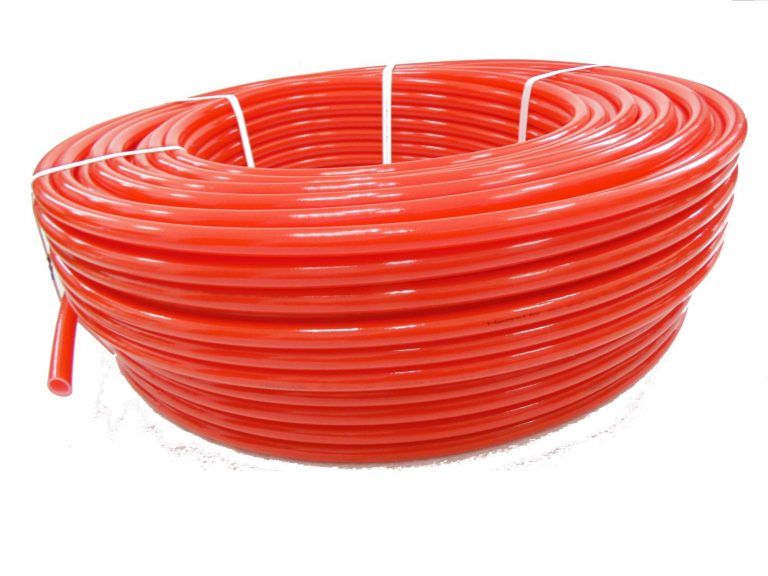 Modern polyethylene pipes do not have a seam
Modern polyethylene pipes do not have a seam With the word "polyethylene", and even sewn, most ordinary people immediately have the image of something fragile and short-lived, but this is by no means the case. Modern technologies make it possible to stitch materials in such a way that no seam remains on the pipe surface, weakening the structural strength.
More recently, plastic hoses were welded with a longitudinal seam, which did not make them particularly durable. As a result of the most common area of \u200b\u200btheir use were cottages and household plots, where they were used to water plantings.
 But polyethylene, crosslinked using modern technology, has increased strength. This is especially true of PE-RT polyethylene pipe, that is, with increased heat resistance. The wall structure of such a pipe is a three-dimensional network with strong molecular bonds. This is achieved by the fact that the pipe is welded at the molecular level, resulting in an almost monolithic joint.
But polyethylene, crosslinked using modern technology, has increased strength. This is especially true of PE-RT polyethylene pipe, that is, with increased heat resistance. The wall structure of such a pipe is a three-dimensional network with strong molecular bonds. This is achieved by the fact that the pipe is welded at the molecular level, resulting in an almost monolithic joint.
Such pipes, according to manufacturers, can withstand pressures up to 20 atmospheres. This strength is achieved partly by the fact that in the systems of underfloor heating, a one-piece flexible pipe without joints is used.
 Among the minuses of polyethylene warm floors can be noted their lack of resistance to external physical influences.
Among the minuses of polyethylene warm floors can be noted their lack of resistance to external physical influences.
External pressure can squeeze the pipe, which will lead to problems with the circulation of the coolant through the system, therefore it is recommended to cover the polyethylene heating elements with a concrete screed, which plays the role of a kind of carapace that protects them from pressure from the floor covering.
Polypropylene
 Pipes made of this material are known to almost everyone today. It is they over the past decade that have almost supplanted the “classics” in the form of metal water pipes in construction.
Pipes made of this material are known to almost everyone today. It is they over the past decade that have almost supplanted the “classics” in the form of metal water pipes in construction.
Polypropylene pipes have a whole range of indisputable advantages:
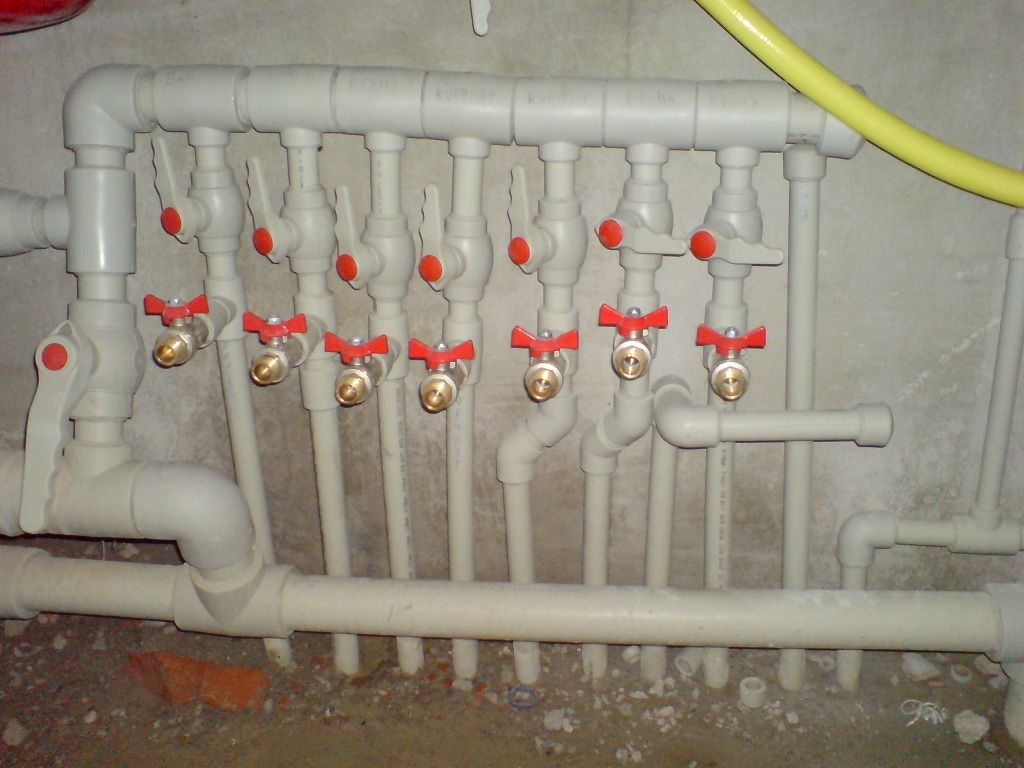
They have heating systems and their drawbacks. First of all, these are limitations in the loads, which are 7.5 atmospheres of pressure and + 95 C of maximum temperature. Recommended operating temperature is + 75 C.
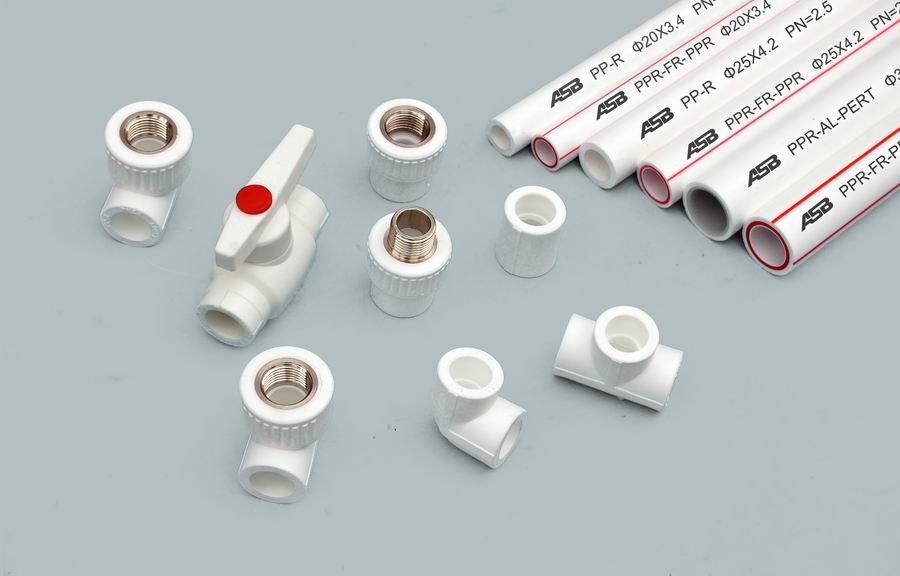 In order to bend such material, you will need special equipment
In order to bend such material, you will need special equipment When these parameters are exceeded, polypropylene begins to deform and significantly increase in volume. Another disadvantage of such pipes is excessive rigidity.
It is unlikely that it will be impossible to lay polypropylene with a “snake” or a spiral, like polyethylene pipes, so when installing a warm floor from polypropylene it will be impossible to do without an “iron” for welding pipes and corner adapters for connecting individual elements.
The strength of the entire heating structure depends on how well the welding is done, therefore, special attention should be paid to the strength and tightness of the joints.
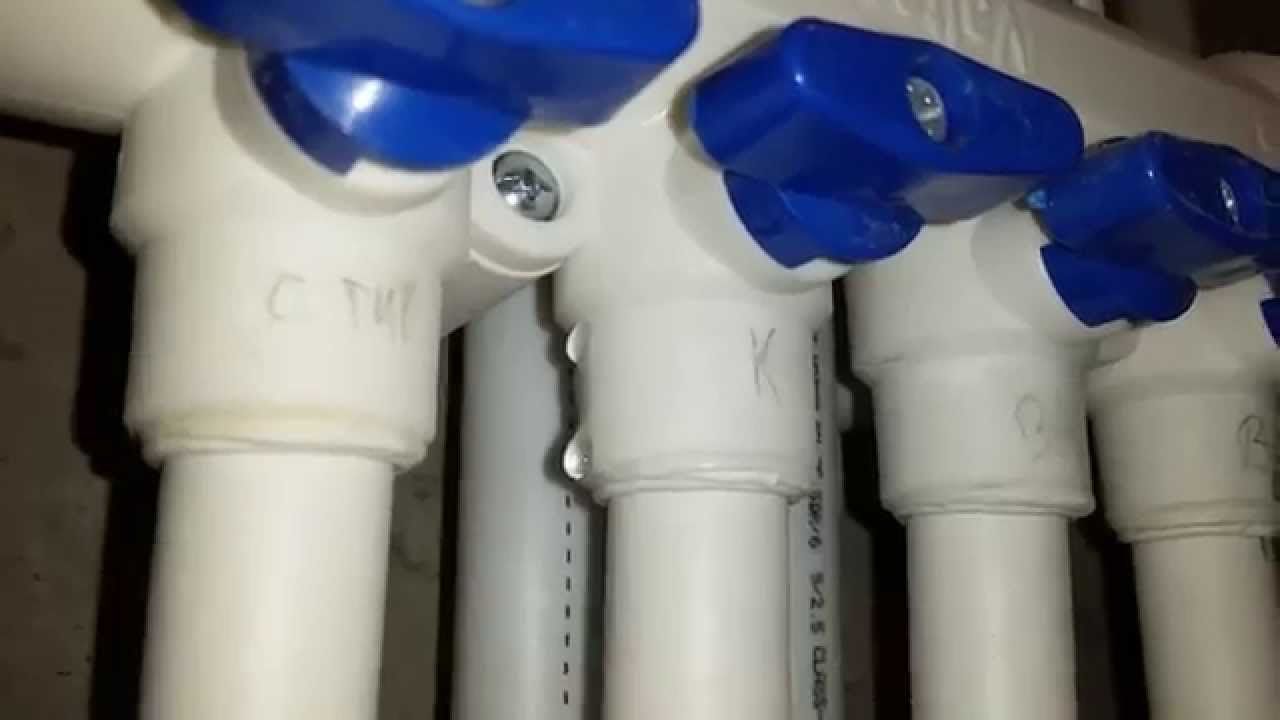 After familiarizing yourself with all the advantages and disadvantages of polypropylene and polyethylene, you can make the most suitable choice for you.
After familiarizing yourself with all the advantages and disadvantages of polypropylene and polyethylene, you can make the most suitable choice for you.
If you decide to use polypropylene pipes as a material for a warm floor, you should familiarize yourself with the main criteria for their selection.
The choice of polypropylene pipes
There are several types of polypropylene pipes on the market today. In order for you to get a durable and efficient floor heating system, you should pay special attention to the choice of polypropylene brand.
Single layer
PPH designation. This type of polymer is made from the so-called homopolypropylene. Pipes made of PPH-polypropylene are intended for ventilation systems and cold water supply systems. 
It is not recommended to install water-heating floors from it because of its low resistance to high temperatures.
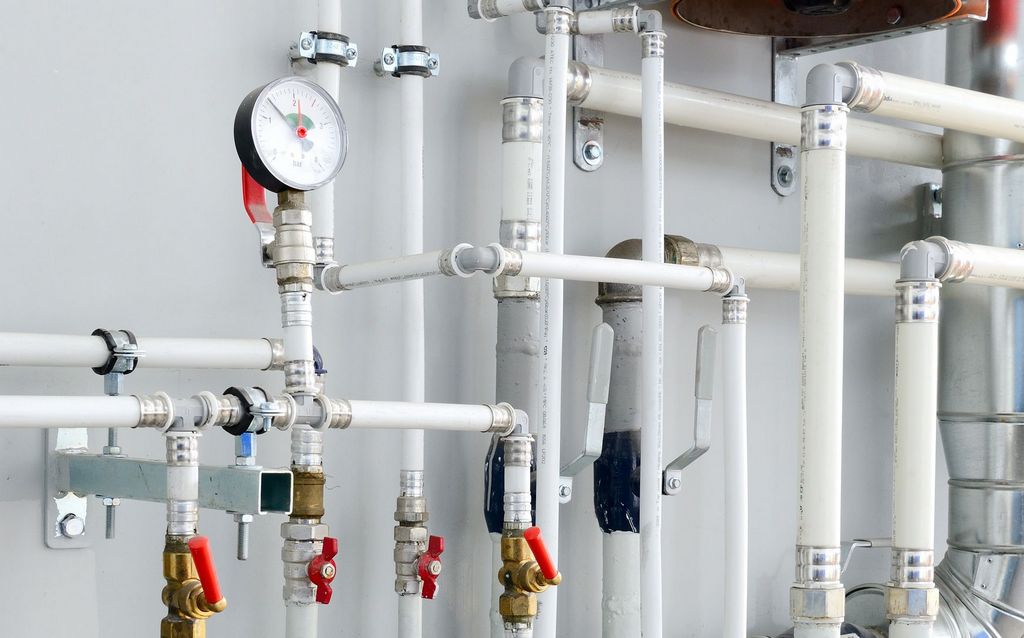 Material resistant to pressure and high temperatures
Material resistant to pressure and high temperatures RRV designation. Such single-layer pipes are made from a polypropylene block copolymer. They are characterized by increased resistance to pressure and temperature, so they can be used for underfloor heating.
PPS designation. Flame retardant polymer designed for use near open flames. It is similar in characteristics to PPB-polypropylene, but has a higher cost.
Layered
 Double-layer pipes have a layer of aluminum or fiberglass
Double-layer pipes have a layer of aluminum or fiberglass Such pipe options are reinforced with a reinforcing layer located between two polymer layers.
Reinforcement is a thin sheet of aluminum or fiberglass with a thickness of not more than 1 mm.
Thanks to him, pipelines made of multilayer polypropylene can operate at a coolant temperature of up to + 95 ... + 100 C (for a short time - up to 110 C).
The pipeline made of multilayer polypropylene is best suited for the manufacture of underfloor heating, due to its increased stability.
Installation of a heating system
After you have chosen and purchased the suitable material, we proceed directly to the installation of heating elements.
Foundation preparation
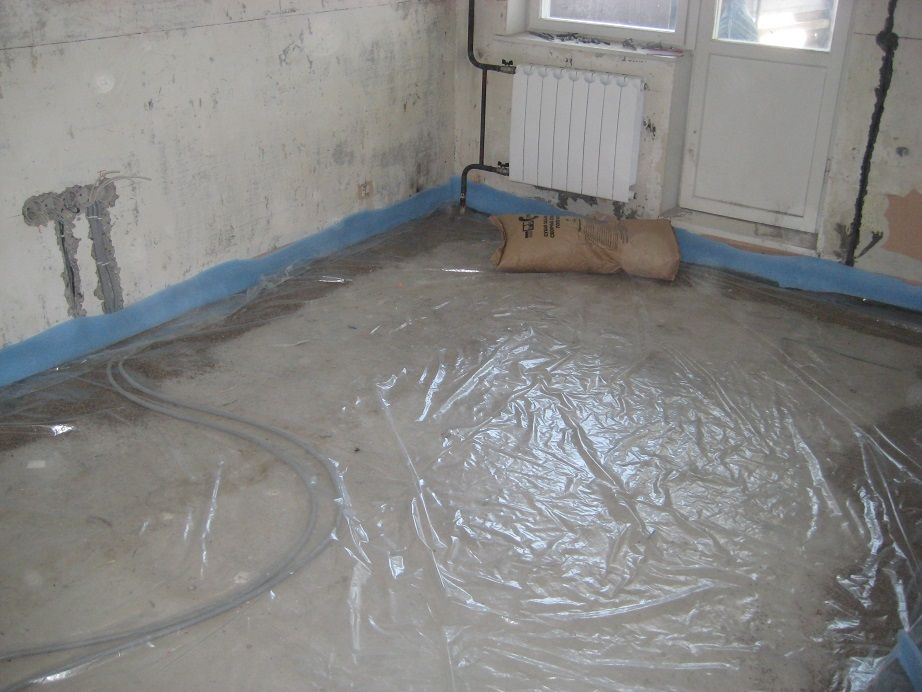 Waterproofing protects from a flood of neighbors from below
Waterproofing protects from a flood of neighbors from below Work on laying the heating pipe should begin with the preparation of the base. First of all, an insulating layer should be laid.
This will help you to avoid troubles with the neighbors from below in case of force majeure in the form of a breakthrough in the pipeline.
For these purposes, it is possible to use both liquid moisture-repellent mastic and ordinary roll waterproofing material: roofing material and similar materials. In the first case, waterproofing is applied using paint brushes or a roller. Liquid mastic fills all pores and microcracks of the concrete base, without leaving moisture to the penetration paths through the floors.
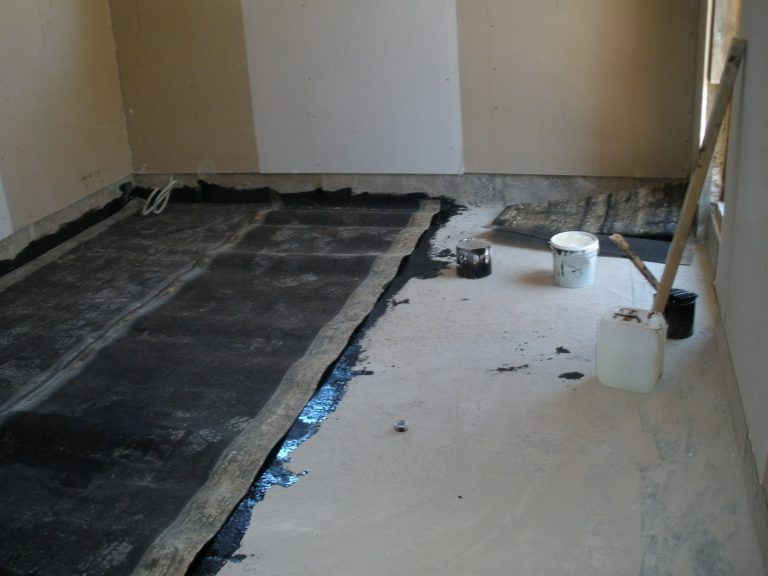 Joints of waterproofing material, coat with mastic
Joints of waterproofing material, coat with mastic Roll waterproofing overlaps one another, gluing to the rough floors with bitumen mastic. The joints of the insulation sheets are also carefully coated with mastic, and if necessary, the sheets of rolled insulation are laid on each other in 2 to 3 layers.
The next step is the insulation of the base. If you do not do this work, then your floor heating design will only warm the room by 50%. The remaining 50% of the heat will be spent on heating the ceiling of neighbors from below or in the basement.
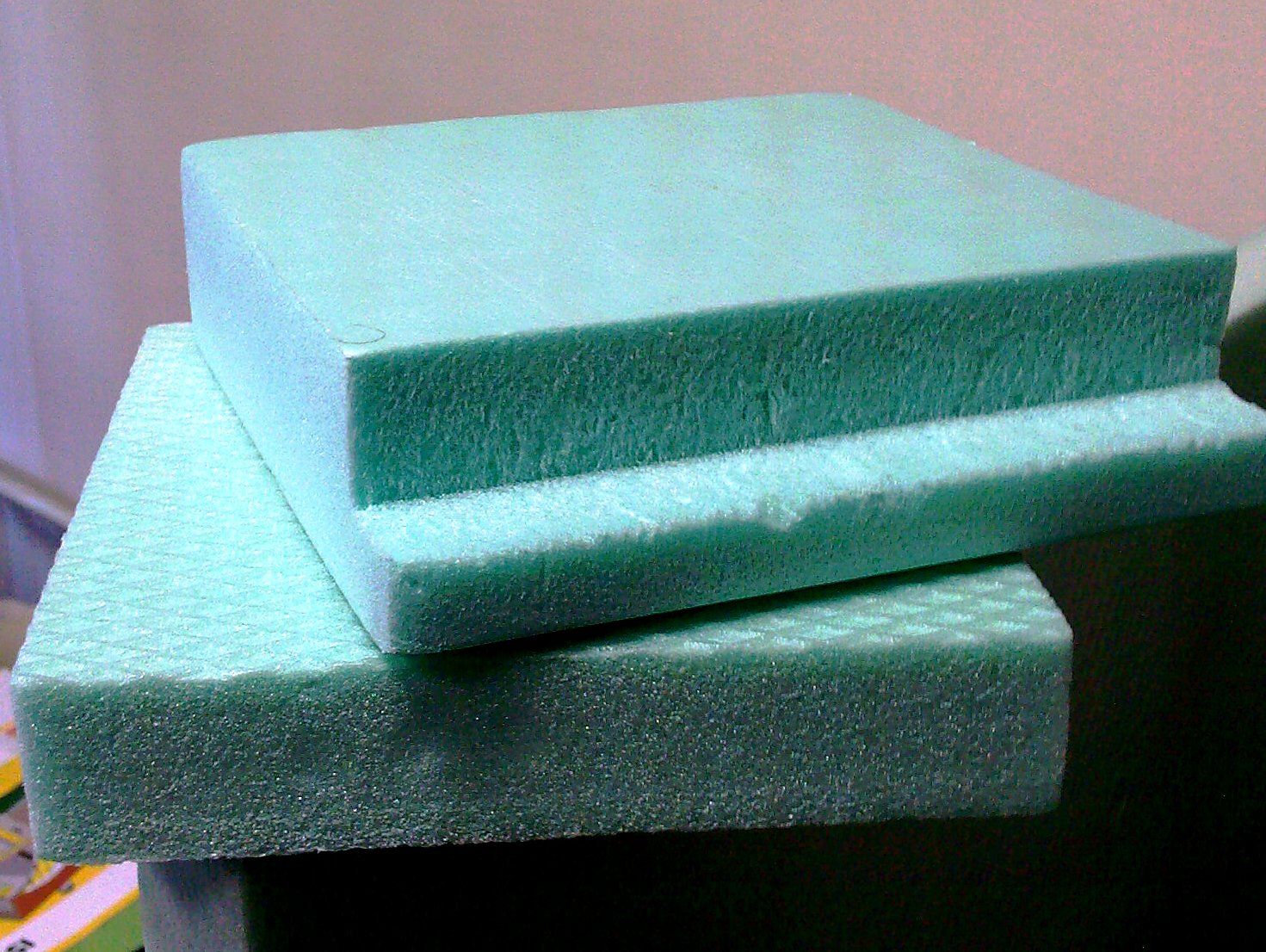
To optimize the cost of thermal energy, we put thermal insulation on top of the waterproofing layer.
For this, sheets of dense material, preferably not afraid of moisture, are best suited.
An ideal option would be dense polystyrene foam (extruded polystyrene) foam, etc. You can also use insulation made of foamed polyethylene with a foil surface.
Do not use the miniplate for insulation flooring under a warm water floor. Firstly, mineral wool is afraid of moisture and, if wet, will lose its insulating qualities. Secondly, the miniplate under the weight of the pipeline, flooring and furniture standing on it will doubt and flatten, which will also negatively affect its properties.
Project drafting
Next, you need to decide how the pipeline will be laid. From whether it will be mounted with a "snake", a spiral, a "double snake", etc. depends on its total length. For more information on how to design a water floor, see this view:
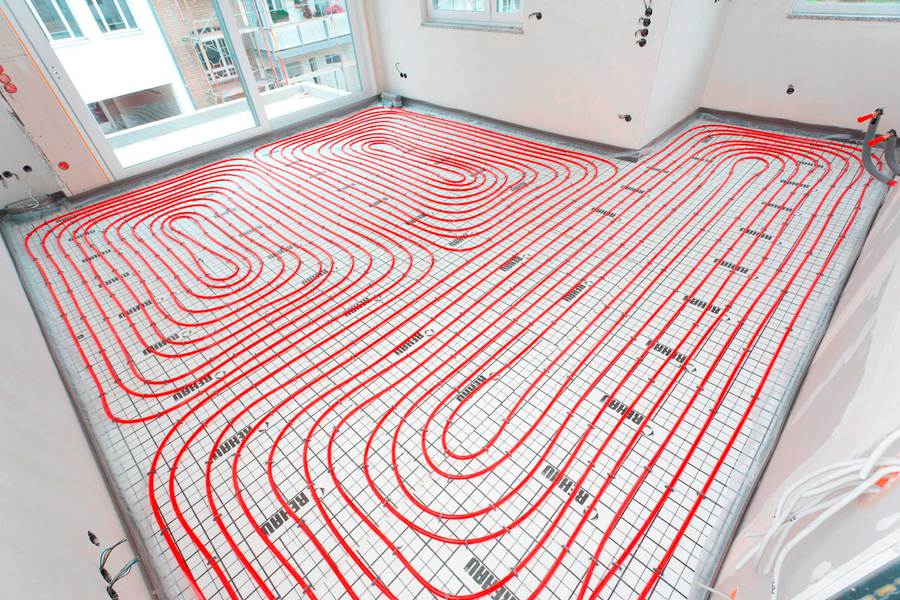 The length of the underfloor heating pipe should not exceed 50 m
The length of the underfloor heating pipe should not exceed 50 m
When designing a project, it should be remembered that polypropylene pipes are quite rigid, so you should not lay too sharp bends and bends in the plan.
For the effective functioning of the heating, a distance between the threads of 25-30 cm is quite enough.
 The length of the pipeline should not exceed 50 m - otherwise, at its far end the heat transfer will be extremely low, and this will lead to uneven heating of the room.
The length of the pipeline should not exceed 50 m - otherwise, at its far end the heat transfer will be extremely low, and this will lead to uneven heating of the room.
To calculate the total length of the heating pipe, lay out its contour on the floor with thread or twine. After that, it remains only to measure the length of the thread to find out the exact footage of the future pipeline.
The table shows the flow rate of pipes depending on the distance between the loops.
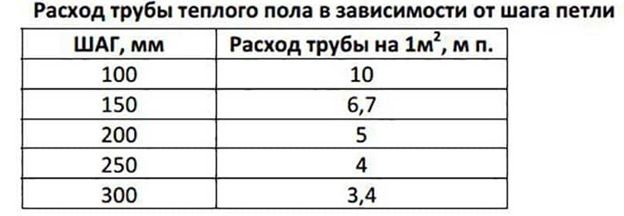
Pipe laying
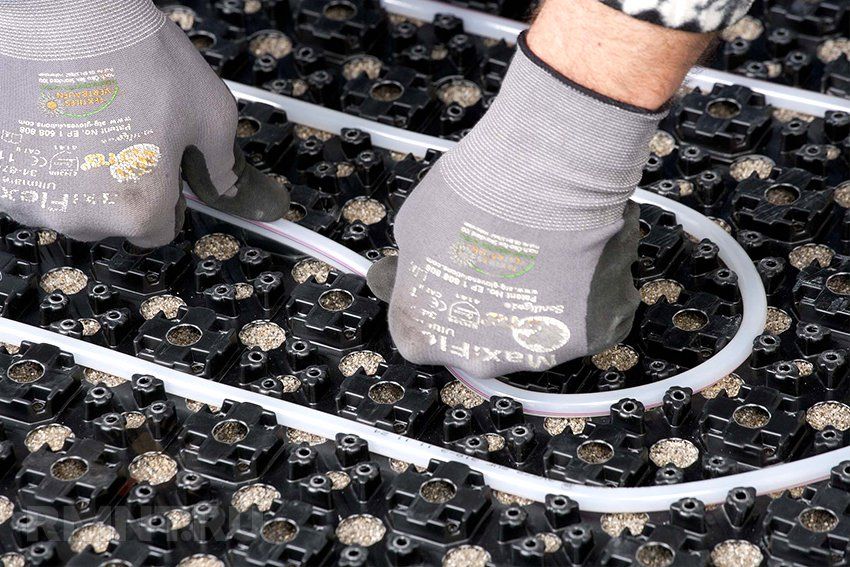 The easiest way to lay a snake is a snake.
The easiest way to lay a snake is a snake. After carrying out all the preparatory work, you can proceed directly to laying the heating circuit. The most effective in terms of thermodynamic indicators is the laying of the contour with a spiral.
However, such a scheme may be too complicated for a not too experienced home master, so if you decide to install underfloor heating at home with your own hands, it is better to opt for a "snake". It is much easier to design, and the parts in this case should be prepared in only two sizes: a large length of pipe for the long side, and a smaller length is used to connect two long pipes.
 To give a bend to pipes use coupling corners
To give a bend to pipes use coupling corners Also, during installation, we will need angle couplings to give a bend to the structure and an iron-soldering iron for polypropylene pipes. For a more rigid fastening of the pipeline, a metal or fiberglass mesh is laid under it, to which the heating elements are attached in several places, on each bend.
The next step is to create a protective layer over the mounted heating circuit in order to relieve pressure on it from the side of furniture and household appliances. For this, you can use a concrete screed. This option perfectly protects the pipes, and also allows you to create a perfectly smooth base for the finish coating. See how to make a floor from polypropylene in this video:
As an option - a device of a rack floor. In this case, between the turns of the pipeline, rails or bars are installed, which should rise 1.5-2 cm above the pipe. They form the base on which a layer of plywood is laid, on top of which a decorative floor covering is already laid - linoleum, laminate, carpet.
The option with a concrete screed is preferable, since concrete is an excellent conductor of heat from heating elements to the environment.
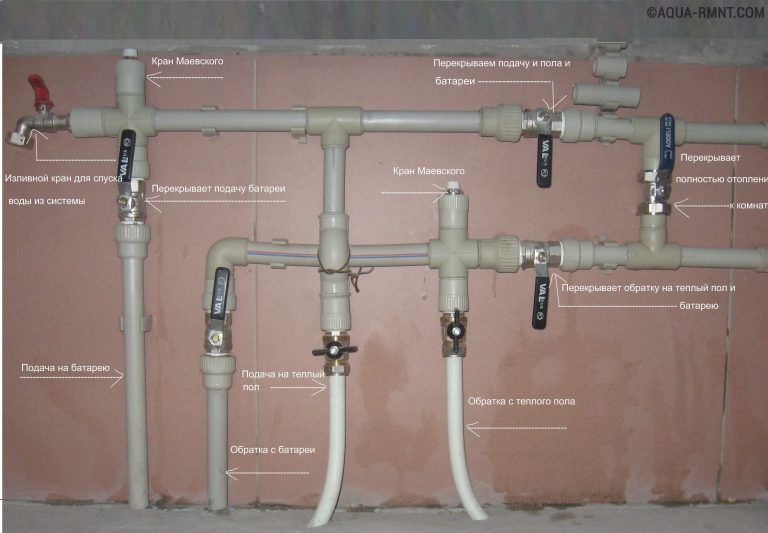 PVC collector device
PVC collector device The rack floor is several times inferior to concrete in this indicator, therefore, it should be mounted only if it is impossible to install a concrete screed or when water floors are planned to be used as auxiliary heating.
As a finishing touch, we produce the flooring of the final floor covering. In this case, preference should be given to materials without a heat-insulating effect, so as not to reduce the efficiency of the heating system.
Many of us are faced with heating problems: the flow of components, the need to replace the heating system in a private house, and so on. However, sooner or later we come to the conclusion that the most effective heating system is one that includes a warm floor. It is not only productive, but also very nice. Despite the terrible winter outside the window, you can safely move around the house barefoot, while still feeling warm and comfortable. What do I need to do? Install a warm floor with your own hands. Moreover, now on the Web there are enough various photos and video materials on this topic, so there will be no problems with the instruction.
Polypropylene pipes
And it’s worth starting with the base - polypropylene pipes. They are now known to many, have become an excellent replacement for traditional metal products. At the same time, they can be used in various environments: in mines, canals, under plaster or in the ground. Therefore, this material is well suited for a warm floor. However, one should not forget to consider the ambient temperature. To establish them, the air temperature should not be less than plus five degrees Celsius. Of course, this significantly limits the use of such material.
Such products have too large a bending radius - this is their main drawback. Thus, with a diameter of 16 mm, the product is laid with a minimum distance of 128 mm. This is not always convenient in terms of providing the necessary thermal power.
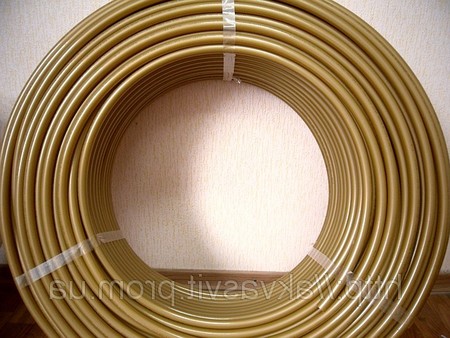
Pipes are connected using a special welding machine based on the thermal method. If it is necessary to connect polypropylene products with metal, then flange and combined parts should be used.
Calculation of a warm "polypropylene" floor
To comply with the maximum temperature of the upper layer of the floor, polypropylene pipes are used - a warm floor is created in the room. At the same time, the water flow rate should be about 0.3 m / s, so that the heat spreads smoothly over the heated area.
What determines the temperature of the warm floor:
- from the type of premises: kitchen, bathroom, corridor and so on;
- from the temperature of the room itself;
- from the final coating: carpet, laminate, tile and so on.
Often, the average parameter is taken at 45 degrees Celsius.
Pipe calculation
It is impossible to make a warm floor without calculating the entire heating system, taking into account the area of \u200b\u200bthe heated room, the pressure of the coolant in the riser, and so on. Based on these characteristics, the calculation of the diameter of the pipes is performed.
Often, pipes 25, 20 and 16 mm in diameter are used for underfloor heating.
What are the consequences of making the wrong choice?
If pipes are installed with a smaller diameter, the circulation of water in the system may be disturbed. To find out the pressure in the system, just measure it with a hydraulic pressure gauge.
When calculating the diameter of the pipes, you should also understand their length. When making calculations, remember that the installation of the system starts from the walls with windows, since the cold air must be heated first. And after that, the heat should be distributed throughout the system.
Styling methods
At the design stage, it is necessary to determine the styling method: “shell” or “snake”.
"Shell" is most often used in our area. Although the design and installation of this method is more complicated than the second. The popularity of this method is due to the uniform distribution of heat on the floor surface. After all, the hot feed and return slightly cooled pipes run in parallel. In this case, an average temperature is observed at any heated section, and the heating point for returning the coolant is in the middle of the pipe.
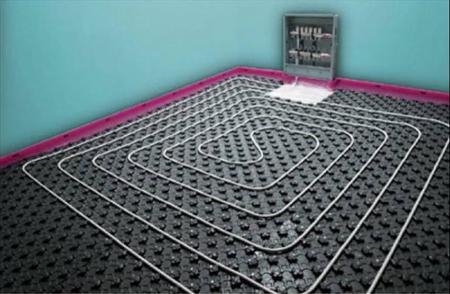
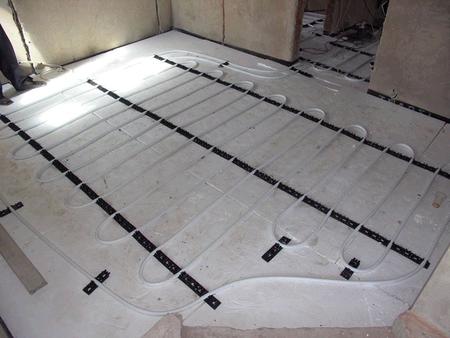
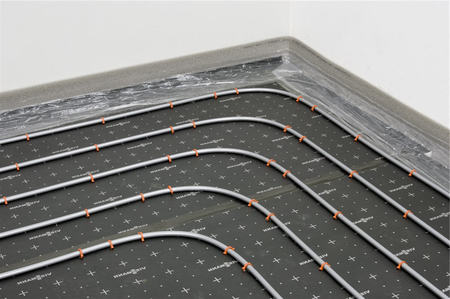
"Snake" can often be found in European homes. Calculations and installation are easier here. Although the uniformity of heat distribution is not necessary. As a result, during operation in some areas, the temperature may exceed the norm. Thus, with this method, heat loss increases, and the level of comfort of use is reduced. Therefore, the "snake" is to lay pipes if the input and output temperature difference is not more than five degrees.
Installation
According to the standards that should be taken into account during the design, the pipes should be located at a distance of about 20 cm from the walls, and the pitch is about 40 cm.
For laying the system, it is better to use skeins, rather than individual pieces of material, since this will reduce the number of joints, and therefore save money.
In one circuit, the length of the heating element must not exceed 100 m. A tap is made to exhaust air at the highest point in the system.
Installation of "polypropylene" warm is carried out according to the principle of installing the pipeline. When laying, you need to monitor the material so as not to inflict mechanical damage to it with a metal mount.
Check
After laying the system, you need to run it at half power. Products must take their final shape, and then a new layer is installed.
Is the game worth the candle?
Doing the installation of a warm floor with your own hands is not difficult, if you are guided by the recommendations given. Additionally, you can see the video and photo instructions. All this in the complex will allow you to create a high-quality and evenly heated floor heating that will delight all households and guests in the cold season.
It is impossible to imagine a modern cozy house without an effective and high-quality heating system, including underfloor heating. Despite the fact that this convenient innovation appeared not so long ago, its reliability, ease of operation and cost-effectiveness have already managed to win the trust of many consumers. Underfloor heating is not only productive, but also pleasant. After all, even in winter you can walk around the house barefoot, and at the same time feel warmth and comfort.
But how to make warm floors with your own hands? Cope on their own is not difficult, as the modern market pleases with a lot of high-quality and affordable materials. One of them is polypropylene pipes, which have become an effective and promising participant in this heating system. Consider how to make a warm floor with your own hands: a photo, in more detail, to avoid errors in the process of its construction.
Polypropylene pipes have become an excellent alternative to traditional metal products.
Appearance of polypropylene pipes
Due to their characteristics, they are widely used in various engineering systems:
- domestic hot and cold water supply;
- heating systems;
- sewer networks;
- for transportation of aggressive environments, which is ensured by chemical resistance of products;
- if installation of warm floors is required.
The practicality and quality of polypropylene pipes determine the great demand for them and allow them to be used to solve important problems in different environments: in canals, walls, shafts, under plaster and in any soil.

Polypropylene pipes for underfloor heating
Advantages of polypropylene pipes
The advantages of these products include:
- Durability - subject to the basic rules of operation of the system, as well as the temperature in it up to 75 degrees, the products can last more than 25 years.
- Joint tightness It is ensured by the use of special technology for connecting the individual components of the pipeline using a soldering iron.
- ElasticityHigh mechanical strength and frost resistance. Even if the transported liquid freezes, the products expand slightly, and then return to their original sizes.
- Not susceptible to corrosion, are not afraid of the effects of solvents and acids, salt deposition on internal surfaces.
- Lack of in them bacterial flora.
- Low thermal conductivity and the absence of condensate due to the same temperature of the coolant at the inlet and outlet of the system.
- Low cost pipes and connecting elements in comparison with alternative options. High environmental performance of the material allows not to harm the environment during its operation and disposal.
- Light weight in comparison with products made of steel.
Polypropylene pipes used for underfloor heating are exposed to high temperatures and change their sizes. Typically, the coefficients of thermal and linear expansion are fixed in their characteristics. Therefore, experts recommend that during installation, give preference to products reinforced with fiberglass or aluminum.
Using other alternatives
Today, for heating systems, in addition to polypropylene, other types of inexpensive materials are also used, the quality of their work largely depends on the correct choice of which. For example, polyethylene pipes with excellent thermal conductivity and wear resistance may be an affordable option for underfloor heating.

Polyethylene pipes
They, unlike the propylene analog, are less susceptible to expansion under the influence of sufficiently high temperatures. When installing pipes made of cross-linked polyethylene, they need to be rigidly fixed, otherwise they can be bent, which relates to their main drawback.
Metal-plastic pipes are also in great demand, thanks to the inner aluminum layer they have good thermal conductivity, and the polymer layers ensure their resistance to damage. A small drawback is considered to be internal scale formation in the places of threaded fittings and a higher cost compared to propylene counterparts.
![]()
Metal-plastic pipes for floor heating
Construction and execution of underfloor heating
Such a system saves usable space since it is located under any floor covering or cement screed. You can arrange a warm floor from polypropylene pipes with your own hands by pouring them with concrete or another plasticizer. At the same time, the coolant circulates through them and evenly distributes heat, starting from the bottom throughout the room.
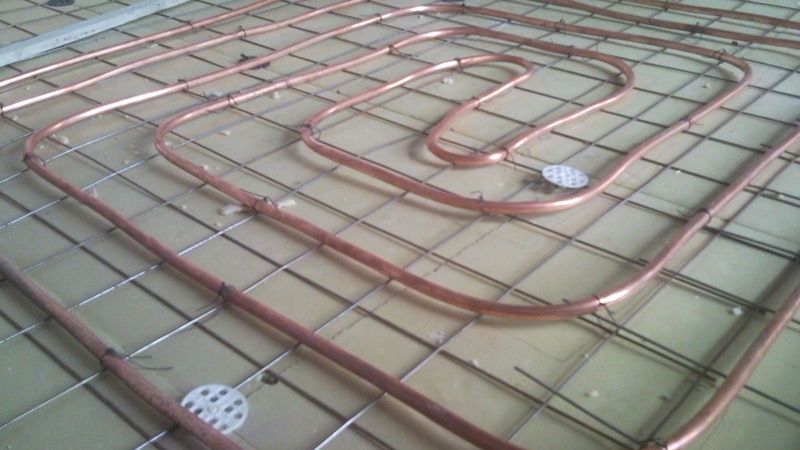
The appearance of the underfloor heating system
In this case, the heat source may be a boiler or other types of heating. Temperature sensors provide timely shutdown of the system immediately after the set temperature is reached, which saves energy.
Do-it-yourself floor heating installation is carried out in several stages:
- project preparation;
- laying and connecting pipes;
- verification and control of system performance;
- arrangement of screed;
- finish coating.
Let us consider in more detail all the stages.
It is impossible to make a warm floor without preparing the project that is needed to calculate the need for materials, the heated area, the temperature capable of ensuring the operation of the system, the location of the boiler and other nuances, including the diameter and length of the pipes. For the effective functioning of heating, all calculations will be more correctly entrusted to professionals.
Installation of the system begins with the installation of a manifold cabinet, which is necessary to connect the circuits to the baseline, through which warm water is supplied and the chilled water is taken.
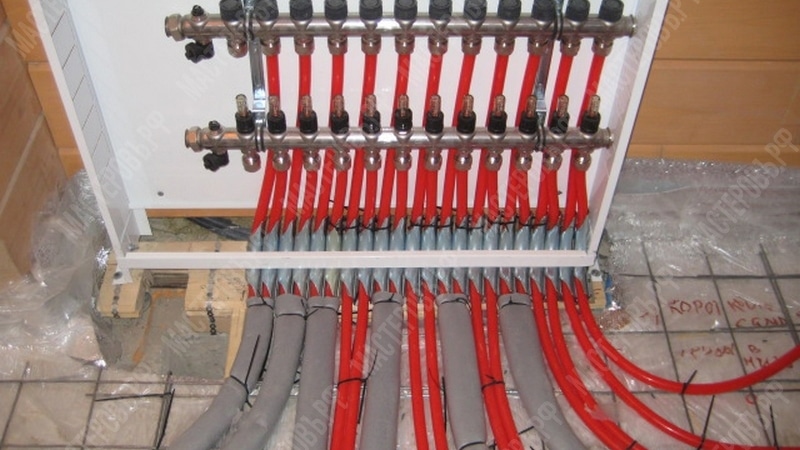
Distribution manifold cabinet
The cabinet is installed above the floor level so that the pipes go down, while ensuring air exhaust and normal operation of the system.
One of the key points when installing underfloor heating is waterproofing, which can protect the room from water leaks. For this purpose, film materials, for example, polyethylene, are often used.
To prevent cracking of the screed during thermal expansion, experts recommend the use of a damping tape, which is glued around the perimeter of the room.
In order to reduce heat loss, thermal insulation is installed that can cope with high loads and has high thermal resistance. For this purpose, a foil coating is used that has excellent mechanical strength, a small compression ratio and evenly distributes heat on the floor surface. A reinforcing metal mesh is used to secure the pipes and fix the screed.
Rules for laying outlines
To ensure the effective operation of this heating system, the basic rules for laying the circuits are required. Their total length should not be more than 80 m. For uniform heating, the length is up to 50 m, the standard diameter is 2 cm. The circuit is calculated and its step is performed for each individual room, especially if they have different temperature conditions.

The process of laying underfloor heating
Pipe laying can be performed using different schemes:
- a spiral;
- double helix;
- snake - loops;
- a snail.
The choice of a suitable scheme depends on the parameters of the room and the functional purpose of its zones. For example, the spiral scheme will ensure uniform heating of the rooms with the correct shape, and the snake will be more suitable so that the hot coolant first gets into the cold zones, and then heats other parts of the room.
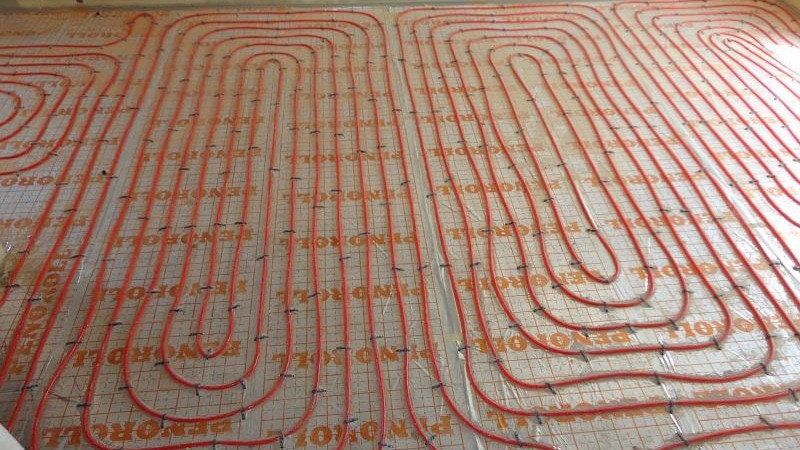
Spiral Pipe Laying
After laying the polypropylene pipes, they are fastened with clamps to a metal reinforcing mesh. Then they are connected to the contours, and the system is filled with water to check for leaks in it. The pressure in the system should exceed the working one by 1.5 times, but be at least 6 bar. Further, the pressure is increased to the previous indicator every half hour at least 3 times, and then left for a day. If during this time the pressure does not drop by more than 2 bars, then the installation is done perfectly.
Arrangement of screed
When filling the floor with concrete, first, using the horizontal level, a beacon profile is installed, along which the surface of the screed is leveled. You can start laying the final flooring no earlier than 28 days after the concrete has completely hardened.
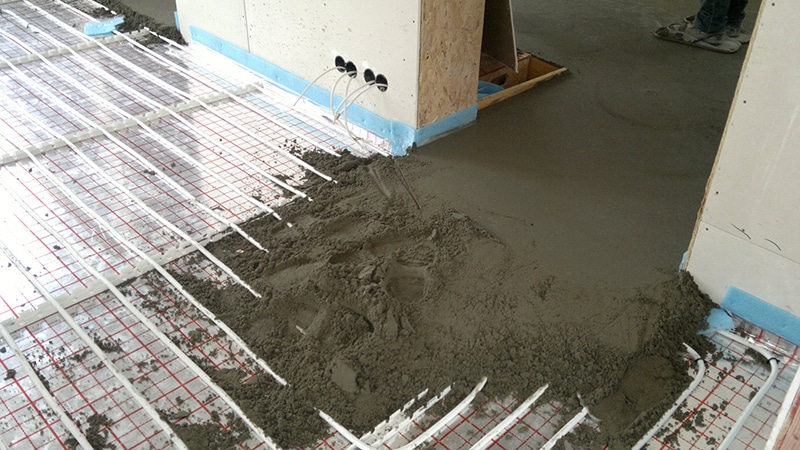
Floor screed when laying the heating system
Tiled underfloor heating
Tiled floors are durable, they are not afraid of moisture and exposure to aggressive liquids. Therefore, many homeowners opt for an electric warm field with subsequent laying of tiles.
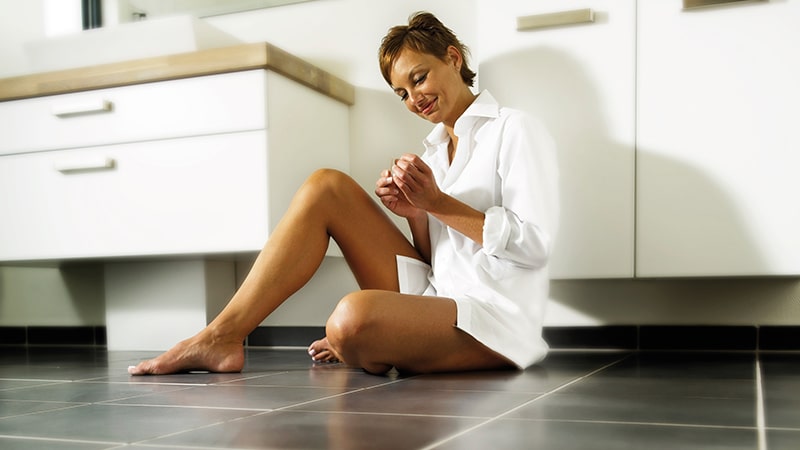
Tiled floor heating
In addition, they are economical because they allow you to adjust the temperature regime according to the season. The device of the heated floor under the tile is made cable, film and in the form of heating mats. Consider their pros and cons.
Cable Underfloor System
Today, cable underfloor heating under tiles is used infrequently. Due to the high pie of this system, including a concrete screed up to 4 cm thick, the height of the room is stolen and the load on the base increases. Therefore, it is better to use it indoors without decoration.

Cable floor heating system
Cheaper products include single core cables. Their use is problematic in rooms with a complex layout, since there is a need for a thermostat. It is easier to lay higher two-core options, the ends of which do not converge at one point. This floor starts after the screed or tile adhesive has completely hardened.
Warm floor made of electric mats
This option is suitable for rooms with a concrete base. Mats have a base of thin cables embedded in a reinforced mesh. They are produced with a thickness of not more than 3 mm and do not reduce the height of the premises. The absence of screed and the minimum thickness of the heating mats allow the use of such floors in rooms with low ceilings.
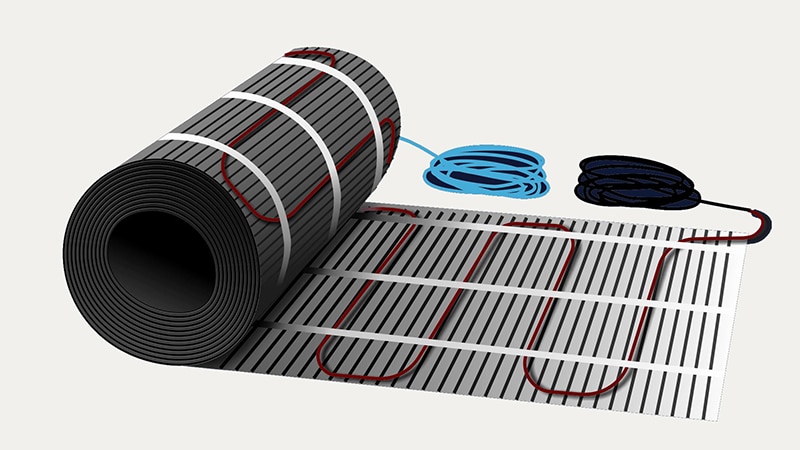
Appearance of mats with electric cable for underfloor heating
They are laid directly on concrete, covered with tile glue, on which the tile is fixed. Despite the ease of installation of this heating system, it costs much more than a cable analogue.
Film floor option
Tiled film underfloor heating is one of the most modern and efficient electrical systems.
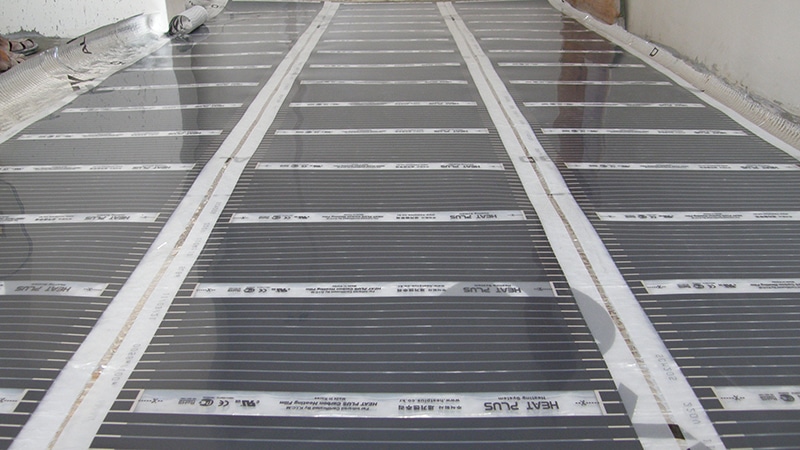
Film underfloor heating
It is convenient to install and can be applied to all topcoats. The heat carrier in the form of infrared radiation not only has a high efficiency, but also is harmless to health.
Now you know how to make a warm floor from heating with your own hands, and choosing the suitable option will allow you to create not only a reliable heating system on your own, but also save on installation and commissioning.
